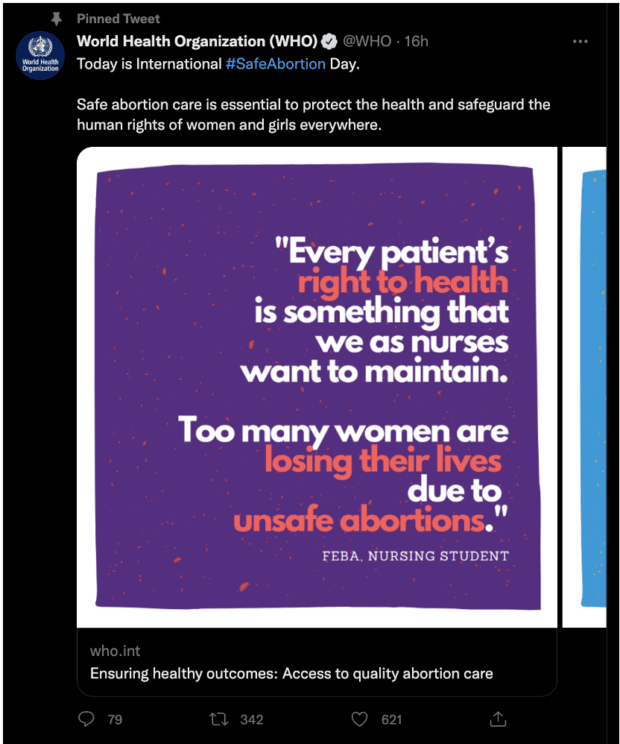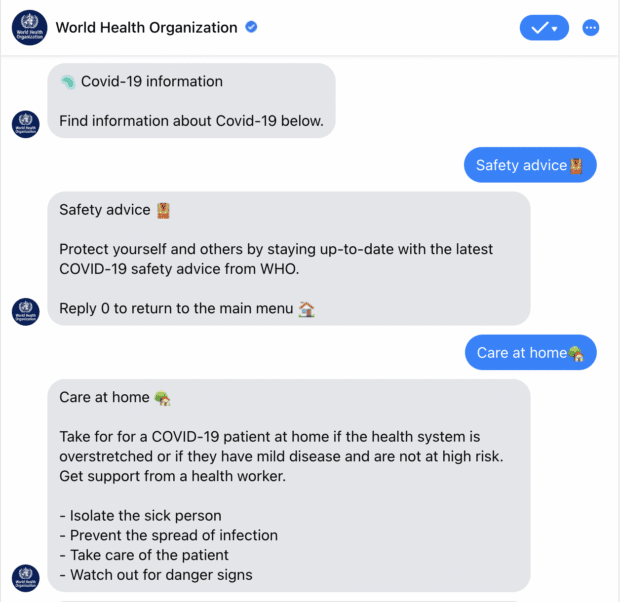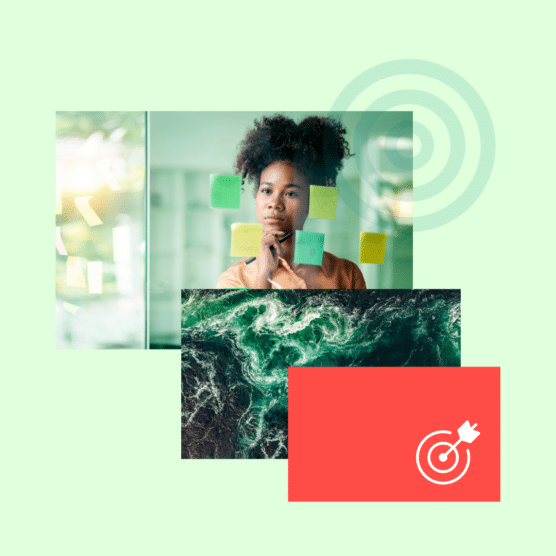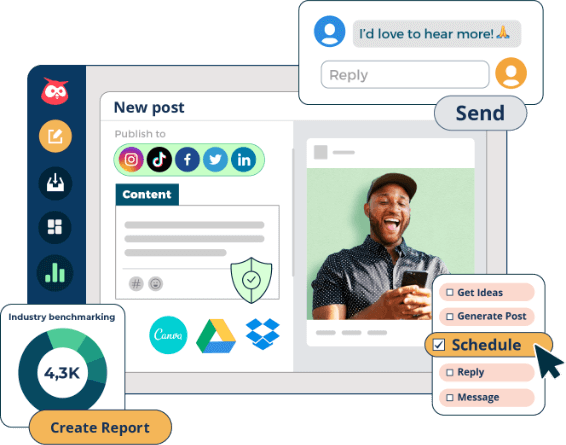It can be hard to navigate the challenges of social media in healthcare. But if 2020 taught us anything, it’s that healthcare and social media can be a very powerful combination.
When used well, social networks are powerful communication tools. They can let you provide science-based health information to millions of people across the globe.
Providers, agencies, and brands need to create social content that’s:
- factual, accurate, and not up for debate
- engaging and friendly
- informative, timely, and accurate
- compliant with all relevant rules and regulations
In this post, we look at the many benefits of social media marketing for healthcare. We also provide tips on keeping your social channels compliant and secure.
Download a free social media toolkit for healthcare professionals with post ideas, templates, and more. Save time and get inspired!
Download nowThe benefits of social media in healthcare include:
- raising public awareness
- combating misinformation
- communicating during a crisis
- expanding the reach of existing resources and recruitment efforts
- answering common questions
- promoting citizen engagement
Raise awareness
Social media is vital to raising public awareness about new, emerging, and annual health concerns.
Promoting public health can be as easy as reminding people of common-sense health practices. Or it can be as complex as planning seasonal campaigns.
Social media can also raise the profile of illnesses, trends, and other health matters.
(1/2) Today is #WorldRabiesDay: Canine rabies accounts for 99% of the 59k global human rabies deaths each year.
Thanks to excellent prevention and control programs, canine rabies is not present in Canada, but it is still circulating in over 100 countries. https://t.co/7PNNaFK9UO pic.twitter.com/pi7EjbY6sX— Health Canada and PHAC (@GovCanHealth) September 28, 2022
Social media is a brilliant platform for large-scale public outreach campaigns. Specifically, because you can directly target the most relevant population groups:
Everyone in BC is eligible for a COVID-19 shot this fall. Make sure you are protected against serious illness from COVID-19 – book your appointment as soon as you get your invite. Learn more: https://t.co/RDr3Yptjpq #CovidBC pic.twitter.com/FKahCujxFt
— BC Government News (@BCGovNews) September 7, 2022
Public issues change lightning fast. Social media is the perfect tool to keep the public aware of the latest issues, guidelines, and advisories.
One of the most effective ways of getting the key information out? Share it directly in the body of your social posts. Always provide a link for the audience so they can access more detailed information if they want to.
Seattle Children’s class, “Finding Mental Health Care in Washington State,” will be offered Oct. 19 for caregivers and families seeking mental and behavioral health services for children or youth under 18. https://t.co/pdk1VzUReO pic.twitter.com/0j51wkx3bO
— Seattle Children's (@seattlechildren) September 27, 2022
How do you counter inappropriate healthcare claims? By raising awareness and providing the public with links to credible sources.
This helps to combat the spread of misinformation on social media by pointing the public toward valid sources of information.
Combat misinformation
At its best, social media helps spread factual and accurate information very quickly to diverse groups of people. This can be invaluable when the information is scientifically correct, clear, and helpful.
Unfortunately, there is a lot of misinformation on social media, especially regarding healthcare. Luckily, more than half of Gen Z and Millennials are “very aware” of “fake news” surrounding COVID-19 on social media. They can often spot fake news on their own, but that doesn’t mean you shouldn’t take it seriously.
Fake news can be a dangerous game when it comes to healthcare.
Even former US president Donald Trump got in hot water for suggesting that the coronavirus could be cured by injecting bleach. This claim is widely disputed by healthcare professionals.
So how do you identify misinformation? The World Health Organization suggests seven steps to navigate the tide of information online:
- Assess the source: Who shared the information with you, and where did they get it from? Did they share a direct link on their social media profile or did they reshare from another source? What website is the original article or information from? Is this a credible and trustworthy source, for example, a news site?
- Go beyond headlines: Headlines are often clickbait to drive traffic to a website. Often, they’re intentionally sensationalized to provoke an emotional response and drive clicks.
- Identify the author: Search the author’s name online to see if they or credible… or even real!
- Check the date: Is this a recent story? Is it up-to-date and relevant to current events? Has a headline, image, or statistic been used out of context?
- Examine the supporting evidence: Credible sources back up their claims with facts, stats, or figures. Review the evidence made in the article or post for credibility.
- Check your biases: Evaluate your own biases and why you may have been drawn to a particular headline or story.
- Turn to fact-checkers: When in doubt, consult trusted fact-checking organizations. The International Fact-Checking Network is a good place to start. Global news outlets focused on debunking misinformation are also good sources. Examples of these include the Associated Press and Reuters.
The bad news is that misinformation comes from factually untrue statements. The good news is that these can be relatively easily debunked — hurray!
For example, citing research or the latest information from a credible health source can help debunk a healthcare myth. The CDC or WHO are ideal sources of this information.
Now for the shady part. Creators of misinformation can use a reputable institution’s name to make them look legitimate.
This is done as a scheme to maximize the article’s authenticity and reach. Bleugh.
But what do you do if you have doubts about an institution’s involvement in an article?
First, you can check their official website. Search on Google for site:institutionname.com “fact you want to validate.”
This search function will crawl the official institute’s website for information about the term in quotation marks.
One thing to be wary of? People are often strongly inclined to believe whatever fits within their existing worldview. Even when presented with quality evidence to the contrary.
In cases like these, it’s important to give people space and allow them to let go of their emotional responses.
Try and understand their emotional interests and encourage them to seek correct information.
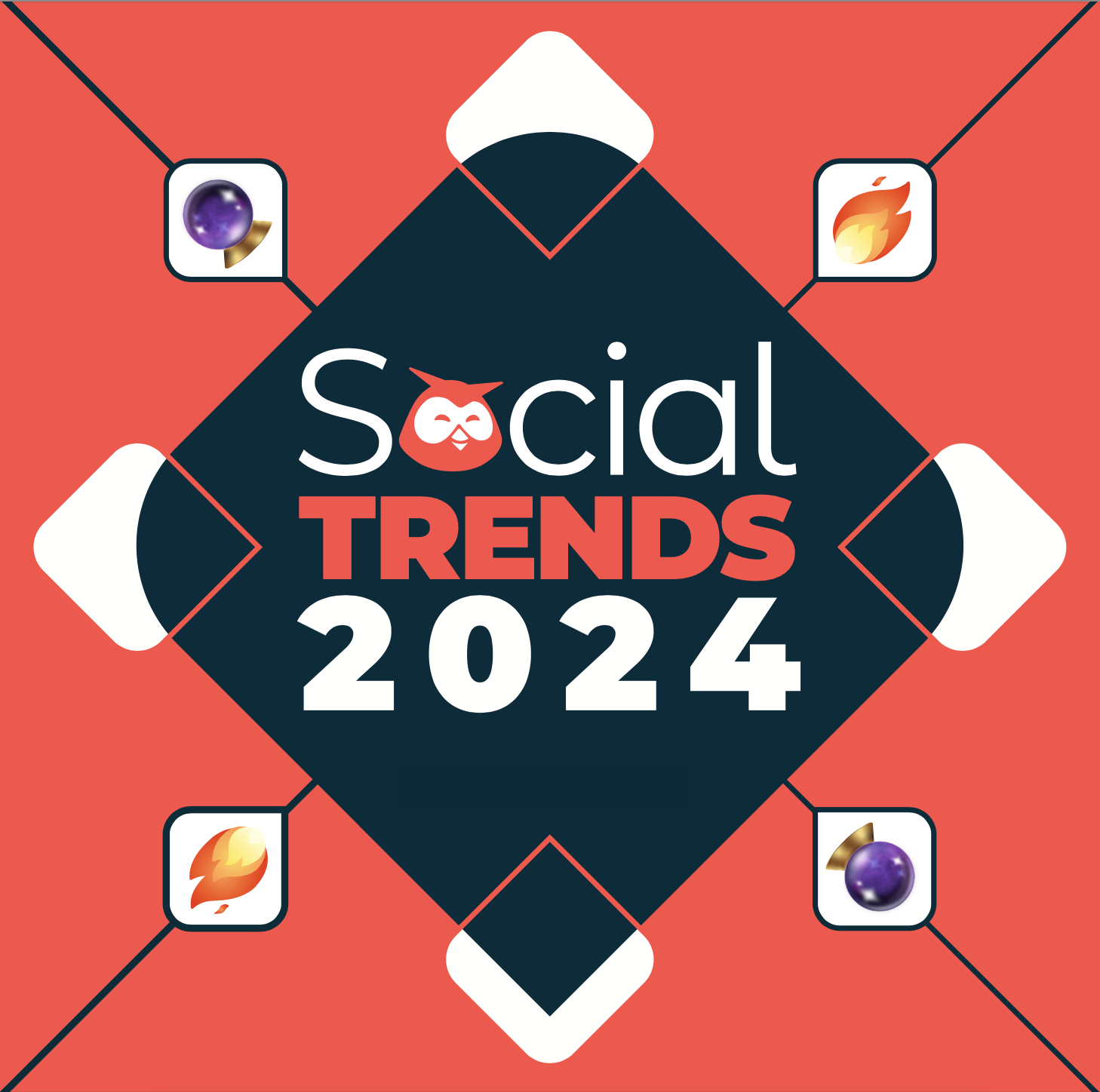
See the latest data and discover the top social media trends specific to the healthcare industry — and give your social strategy a boost(er).
Get the reportCrisis communication
According to Pew Research Center, a significant number of U.S. adults (82%) use digital devices to access news.
For those aged 29 and younger, social media is the most common news source.
The New York Times even recently reported that TikTok is now the go-to search engine for Gen-Z.
Social media is the key place to share breaking information. This is especially true for events that are in the public’s best interest to be up to speed on.
Let’s look at a recent example. During the COVID-19 pandemic, people turned to government health officials for the facts.
US state government offices teamed up with medical health officers. Together, they used social media to effectively communicate during this time of crisis.
This was accomplished in part with regular video updates on social platforms such as Facebook.
Social media is a great way to provide real-time updates directly to the public. This is especially true for a situation that is constantly changing.
Additionally, social media can have faster and further reach than traditional media (such as TV and newspapers).
https://www.facebook.com/WADeptHealth/videos/5630237740378124/
Use the pinned post features and regularly update banners and cover images. This can also help to direct people to key resources.
https://www.facebook.com/WADeptHealth/videos/5630237740378124/
Expand the reach of existing resources
Medical professionals often use journals and conferences to keep up with new knowledge. Use social media to bring this education to the learners.
Here’s another COVID-19 example. In 2021 the European Society of Intensive Care Medicine (ESICM) announced that their LIVES conference would be held digitally.
This allowed all interested parties to take part no matter where they were.
In addition to a dedicated website, they shared the webinars through live video on YouTube and Facebook. They also live-Tweeted the events.
#LIVES2021 is on! During the congress, our platform's Channel 1 will be open for everybody to enjoy the hottest topics in #IntensiveCare. Join us on:
🔹 the congress platform: https://t.co/cyaO561FtK
🔹 Facebook:https://t.co/CTvLUasqRx
🔹 YouTube: https://t.co/f8ZpeamAvP pic.twitter.com/tjkWy2YbnR— ESICM (@ESICM) October 4, 2021
Answer common questions
Hands up: Who’s felt under the weather and then fallen down a WebMD hole? You know, self-diagnosing yourself with the worst health matters possible? Yup, me too.
This is why factual info from health authorities are vital for addressing common health concerns.
Social media platforms offer healthcare professionals a way to engage with the public. Answering common health questions stops people from self-diagnosing and gives them peace of mind.
For example, the World Health Organization developed a Facebook Messenger chatbot.
It can answer questions from users, direct people to credible sources, and help to counter misinformation.
Source: World Health Organization
Citizen engagement
Talking about personal healthcare issues can be difficult. Yes, even for doctors and trained professionals.
This is especially true for subjects such as mental health. Social stigmas can often prevent people from seeking the professional help they may need.
In March 2021, Maltesers launched its social media campaign #TheMassiveOvershare. The goal was to promote maternal mental health and encourage mothers to be open about their mental health struggles.
The campaign also directed users to mental health resources through its partnership with UK charity Comic Relief.
A study commissioned by Maltesers found that 1 in 10 mothers in the UK experiences mental health issues. But crucially, 70% of this cohort admit to downplaying their struggles and experiences.
The campaign was launched ahead of Mother’s Day in the UK. It invited mothers to normalize the conversation about post-partum depression and increase recognition of a frequently undetected and misdiagnosed issue.
The following November, Maltesers launched a second phase of the #LoveBeatsLikes campaign. This time they encouraged people to look beyond social media Likes and check in with the moms in their life.
Research recruitment
Social media offers an opportunity to connect healthcare practitioners and centers with potential study and survey participants.
Like brands, researchers and healthcare organizations need to understand social media demographics. Combining this with social media advertising can ensure that their campaigns get seen by their target audience.
Marketing
Social media continues to emerge as one of the best ways for healthcare marketers to connect. 39% of marketers utilize paid social media to reach healthcare professionals.
Plus, more than half of healthcare marketers say that they rely on social media to reach consumers. That means social media is no longer an optional element in your marketing strategy.

Create and publish posts. Talk to patients and prospects. Measure ROI. Save time and grow faster.
Book a demoSocial media tips for healthcare organizations
Educate and share valuable content
How do you engage with the public long-term? You must regularly provide your followers with valuable content that educates and informs.
Let’s see what that looks like in action with the Mayo Clinic. They created a video series that covers popular health and wellness topics.
The “Mayo Clinic Minutes” are short, informative, and engaging. The videos regularly rack up more than 10,000 views on Facebook.
The information needs to be credible, of course, and true. But you can get creative and entertaining if that makes sense for your brand.
In recent years, TikTok has become a haven for healthcare professionals. These influencers use the platform to share bite-size, informative, and entertaining content.
Dr. Karan Rajan is a NHS surgical doctor and lecturer at Sunderland University in the UK. He has racked up a massive 4.9 million followers on his personal social media account.
The doctor’s content varies from daily healthcare tips and information on chronic conditions to lightheartedly debunking popular home remedy fads.
@dr.karanr CHOCOLATE COVERED P00p
It’s important to ensure that you use the appropriate tone for your brand and the audience you’re speaking to.
For example, The Mayo Clinic’ videos are hosted on Facebook deliberatly. Facebook’s audience is typically older, so the content is slower-paced.
Dr. Rajan’s videos are on TikTok, which skews toward Gen-Z, so the content is more snappy.
It’s also important to choose the right channel for your content.
A recent study was done on the trustworthiness of coronavirus content on social media. It found that some platforms are far more trusted than others.
Content posted on YouTube was deemed the most trustworthy, with Snapchat content deemed the least reliable.
Listen for relevant conversations
Social listening enables you to track social media conversations relevant to your field.
Those conversations can help you understand how people feel about you and your organization.
Sneakily, you can also use social monitoring tools to learn how they feel about the competition. You might even identify new ideas that help guide your social communications strategy.
Social listening is also a good use of social media in healthcare. It allows marketers to get a sense of how the public responds to emergent health issues.
The Royal Australian College of General Practitioners (RACGP) uses social listening to track health-related trends.
This helped them validate telehealth as a priority — they saw 2,000 mentions of the term across social platforms.
https://www.facebook.com/TheRACGP/posts/4066838680009446
“We already knew that GPs felt this was a component of care that they needed to continue providing to patients,” said RACGP. “We provided our social listening insights to validate that the wider general practice community felt the same way.”
Here are some key terms to listen for on social channels:
- Your organization or practice name and handles
- Your product name(s), including common misspellings
- Your competitors’ brand names, product names, and handles
- Industry buzzwords: The Healthcare Hashtag Project is a great place to start.
- Your slogan and those of your competitors
- Names of key people in your organization (your CEO, spokesperson, etc.)
- Names of key people in your competitors’ organizations
- Campaign names or keywords
- Your branded hashtags and those of your competitors
Social media management platforms like Hootsuite make social listening easy. They allow you to monitor all relevant keywords and phrases across social networks from a single platform.
Remain compliant
The healthcare industry’s strict rules and regulations can post a big challenge for social media marketers.
Compliance is crucial for professionals that share sensitive information that concerns the public. In the healthcare industry, HIPAA and FDA compliance are a must.
Unfortunately, things don’t always go to plan.
In 2022, the FDA issued a warning to pharmaceutical company Eli Lilly. The letter addressed an Instagram ad for Eli Lilly’s type 2 diabetes drug Trulicity.
Source: FDA
The FDA stated that the post “creates a misleading impression about the scope of the FDA-approved indication”. They described as particularly concerning given the serious risks of this product. The post has since been taken down.
So far in 2022 alone, the FDA has sent 15 warning letters that specifically reference claims made on Instagram accounts.
You don’t want lawyers writing your social media posts for you. But you may want lawyers (or other compliance experts) to review your posts before they go live.
This is especially true for major announcements or particularly sensitive posts.
Hootsuite can get more of your team involved without increasing compliance risk.
People from across your organization can contribute social media content. But, then, only those who understand the compliance rules can approve a post or push it live.
Your organization needs a healthcare social media strategy and a social media style guide.
You should also have guidelines for using social media for healthcare professionals. A social media policy for healthcare employees is also a good bet.
If you need help building any of these resources, we’ve gathered several in a healthcare-specific social media template bundle:
Bonus: Download a free social media toolkit for healthcare professionals with post ideas, templates, and more. Save time and get inspired!
Stay secure
It’s vital to ensure security guidelines are in place for all your healthcare social media channels. You need to be able to revoke access for anyone who leaves the organization.
With Hootsuite, you can manage permissions from one centralized dashboard. This means you can always control access to all your social channels.
Maintaining your organization’s social media presence as a healthcare professional can be challenging. But the opportunities that social media can present in your industry are endless.
Looking for even more information? Check out our free report on the 5 key trends to prepare for success in healthcare.
Leading healthcare providers, insurers, and life science companies worldwide use Hootsuite to attract potential patients, improve their customer experience, unify their social message, and ensure compliance with industry regulations. See for yourself why we are the healthcare industry’s leading social media management platform!
Learn More About Hootsuite For Healthcare
Attract new patients, grow your reputation, and stay compliant with Hootsuite, the most trusted social media tool for healthcare.
Book a Demo
